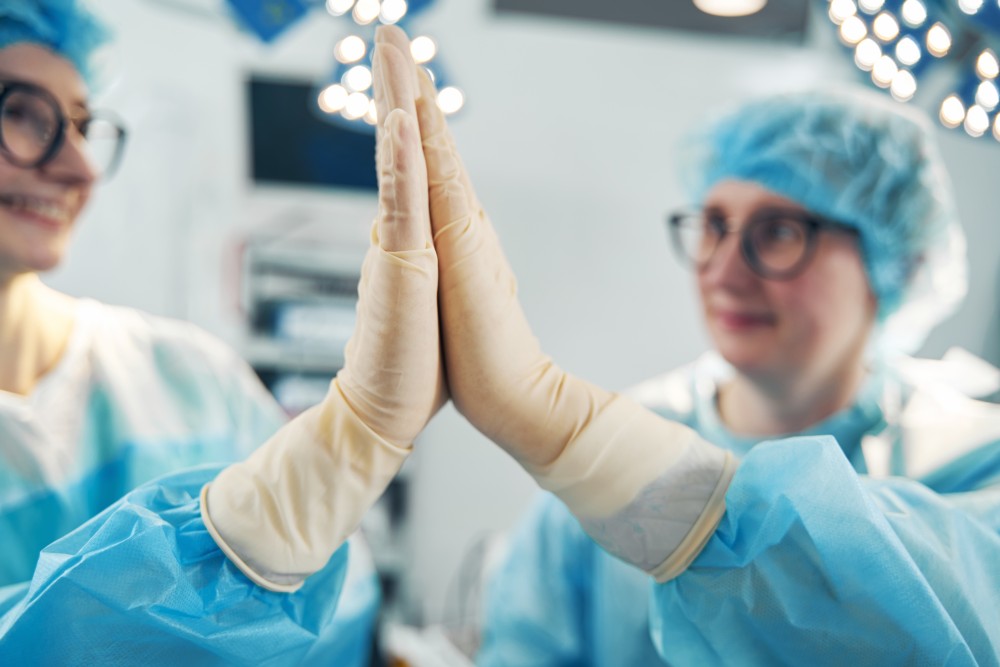
Differences Between Sterile and Non-Sterile Surgical Gloves?
Surgical gloves are essential for ensuring the safety and hygiene of both medical professionals and patients during procedures. However, not all surgical gloves are created equal. The main distinction lies between sterile and non-sterile gloves. Understanding the differences between these two types can help you choose the right gloves for various medical tasks.
Sterile Surgical Gloves
Sterile surgical gloves are specially designed to meet rigorous standards for cleanliness and are free from all forms of bacteria, viruses, and other contaminants.
Manufacturing and Sterilization
Sterile gloves undergo a strict manufacturing process, followed by sterilization using methods such as gamma radiation, ethylene oxide gas, or autoclaving. This process ensures that the gloves meet the highest standards of sterility, making them suitable for use in invasive procedures where the risk of infection must be minimized.
Packaging and Handling
These gloves are individually packaged to maintain sterility until they are needed. The packaging is designed to be easily opened in a sterile environment, ensuring that the gloves remain uncontaminated during handling. Medical professionals must follow strict protocols to don sterile gloves correctly to maintain their sterility.
Applications
Sterile gloves are primarily used in surgical settings and other invasive procedures such as catheterization, wound dressing, and when inserting central lines. The high level of sterility is crucial in these contexts to prevent infections and ensure patient safety.
Non-Sterile Surgical Gloves
Non-sterile surgical gloves, while still providing a barrier against contaminants, do not meet the same stringent sterilization standards as their sterile counterparts.
Manufacturing and Quality Control
Non-sterile gloves are manufactured under conditions that maintain general cleanliness, but they do not undergo the additional sterilization process. Despite this, they are still subject to quality control measures to ensure they are free from significant contaminants and defects.
Packaging and Accessibility
These gloves are typically packaged in bulk rather than individually, making them more convenient and cost-effective for situations where sterility is not a primary concern. They are easily accessible for quick use, which is beneficial in busy medical environments.
Applications
Non-sterile gloves are used for routine medical examinations, handling bodily fluids, and performing minor procedures that do not involve a high risk of infection. They are also commonly used in non-medical settings, such as in laboratories, food handling, and cleaning tasks.
Cost and Availability
Sterile gloves are generally more expensive than non-sterile gloves due to the additional steps involved in their sterilization and packaging. The choice between the two often depends on the specific requirements of the task at hand. In environments where sterility is crucial, the higher cost is justified. However, for routine or lower-risk tasks, non-sterile gloves offer a cost-effective and practical solution.
Disposal Protocols
After use, gloves should be disposed of in accordance with local regulations and guidelines. Contaminated gloves, especially those exposed to blood or bodily fluids, should be disposed of in designated biohazard containers to prevent the spread of infection. Proper disposal is crucial to protecting both the user and others from potential hazards.
Environmental Considerations
Many gloves are made from materials that are not biodegradable. Consider using gloves made from environmentally friendly materials when possible, and always follow proper recycling protocols if applicable. Some manufacturers offer gloves made from more sustainable materials, reducing the environmental impact of their disposal.
Beybi Plastik, since its establishment in 1949; operates in the field of personal protective work safety gloves, examination gloves production and sales, sterile surgical gloves and medical consumables sales and marketing.



